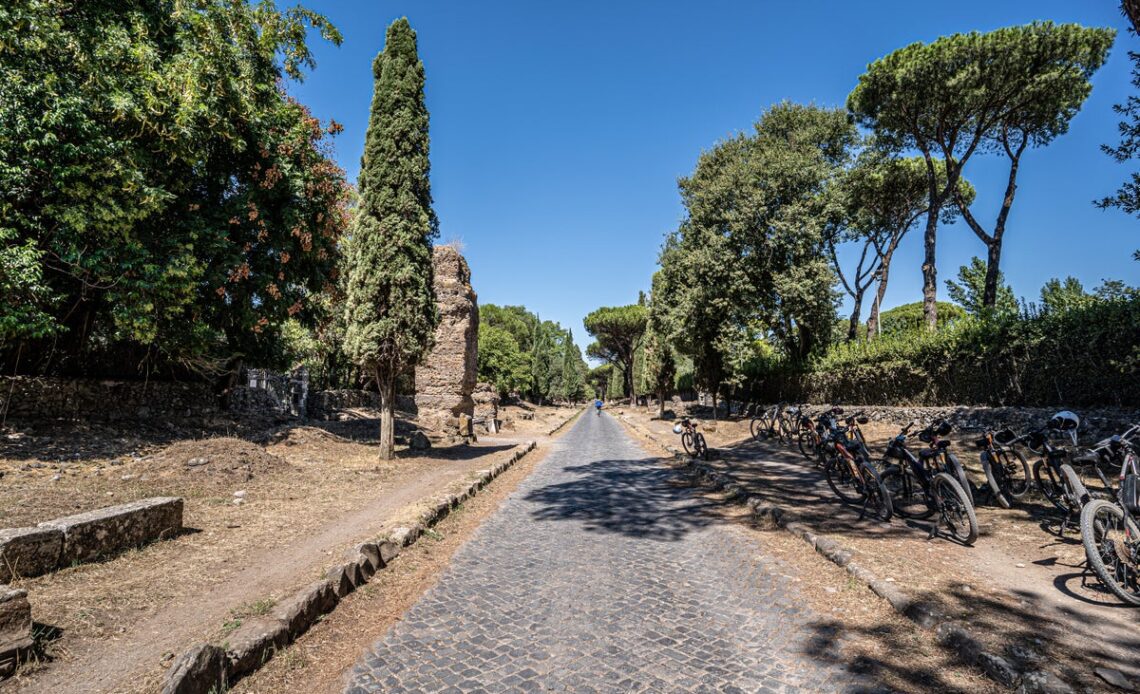It was 9am in Rome, and the Colosseum cast great shadows across well-formed queues of tourists edging closer to the almost 2,000-year-old entrance. I’d braved this queue many years before on my first visit to the Italian capital, but this time I’d arrived in Rome the night before with the intention of escaping the city almost immediately.
I wasn’t here to see the Forum, the Pantheon or the Baths of Caracalla either; I was here to see a lesser-known work of Roman engineering arguably more vital to Roman history than amphitheatres and hippodromes. I pushed against the tide of tourists walking towards the Colosseum and instead made my way to a bicycle rental shop on a nearby sidestreet.
Inside, staff were busy checking batteries and fiddling with gears, as they prepared e-bikes for the day’s cycling tour.
“We’ll be cycling the Via Appia or the ancient Appian Way,” explained Sara Pelagus, our e-Biking tour guide, as our group of 10 or so tourists strapped on helmets and adjusted saddles. “The road goes all the way from Rome to Brindisi. It was 600 kilometres in total, but don’t worry, because we are just covering around 30 kilometres today!”
(Richard Collett)
The Appian Way is the original superhighway. The Roman statesman Appius Claudius Caecus ordered its construction in 312BC, and it became a means to expand power to the southeast of Rome. Roman legions, travellers and merchants could quickly march from Rome to the port city of Brindisi, from where they could cross the Adriatic Sea, and in later centuries join the Via Egnatia (starting in what’s now Albania) to travel all the way to Constantinople (now Istanbul).
The best-preserved segments of this 2,300-year-old route are found outside Rome. Sixteen kilometres of paved cobblestones are protected alongside equally historic catacombs, churches and castles as part of the Parco Regionale dell’Appia Antica,the second-largest urban park in Europe.
Today, a number of companies offer full and half-day e-Bike tours through the park, offering a sustainable, history-packed way to escape the city and avoid the crowds at Rome’s better-known ancient sites.
Padded seats and turbo mode made the e-bikes a breeze to ride, and I cycled past the Colosseum’s queues and followed Sara along modern roads to Rome’s Aurelian Walls
Padded seats and turbo mode made the e-bikes a…
Click Here to Read the Full Original Article at The Independent Travel…
